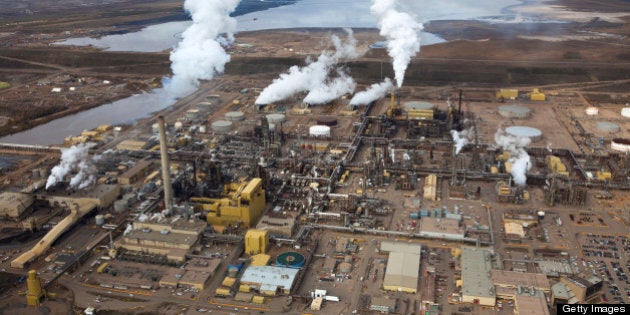
Mercury levels around the Alberta oilsands are 16 times higher than background loads, with contamination taking on the shape of a 'bull's-eye' over the region, say Environment Canada scientists.
Speaking at the Society of Environmental Toxicology and Chemistry conference in Nashville, Environment Canada researchers Jane Kirk and Derek Muir said mercury levels are at their highest concentration in the immediate area of oilsands operations but extend out to cover a 19,000-square-kilometre area, Postmedia reports.
“Here we have a direct source of methyl mercury being emitted in this region and deposited to the landscapes and water bodies,” Kirk told Postmedia.
“So come snowmelt that methyl mercury is now going to enter lakes and rivers where potentially it could be taken up directly by organisms and then bioaccumulated and biomagnified though food webs.”
Kirk did quantify her findings by pointing out the fact mercury loadings around the oilsands region are still lower than in heavy coal-consuming areas of North America, such as southern Ontario and Quebec.
Kirk's findings come on the heels of a study released in October that found rising traces of mercury in bird eggs downstream from the oilsands.
The study, which was conducted by the Joint Oil Sands Monitoring (JOSM) program, a federal-provincial initiative, is the third peer-reviewed study since 2010 to show mercury levels increasing in the ecosystem in the region, the Globe and Mail reported.
Scientists have expressed concerns over the levels of mercury in the area due to the fact the element accumulates as it moves its way up the food chain.
Read More Related
Doctors Call For Study Of Oil Sands' Impact On Health
Oilsands Health Survey Of Fort Chipewyan, Fort McKay Collapses
Health concerns, such as alleged higher-than-normal levels of cancer and birth deformity among First Nations populations in northern Alberta, have long been reported in the oilsands region.
Concerns over resource extraction in the Mackenzie River basin was such that the Canadian Medical Association recently called for a medical investigation into the health risks and effects that some allege are associated with the industry.
A University of Calgary health study is also expected to be carried out in the near future to encompass the Athabasca Chipewyan First Nation, the Nunee Health Authority and the Fort McKay Metis community.
Kirk's study, which is expected to be published early this year, highlights what is becoming a hostile business environment for the province's oil industry.
Story continues below slideshow
Pipeline projects, which are critical if Alberta oil players are to remain viable, remain under threat of environmental and health pressures in the U.S., in neighbouring B.C. and, to a lesser degree, in Ontario and Quebec.
A thriving oilsands sector is also in the best interest of the Alberta government, which has closely tied its fortunes to the windfall of revenue created by the energy industry in the province.
When the Alberta government found itself unable to balance its budget in 2013, it blamed it on low revenues from the energy sector due to low prices paid for oilsands bitumen and limited pipeline infrastructure.